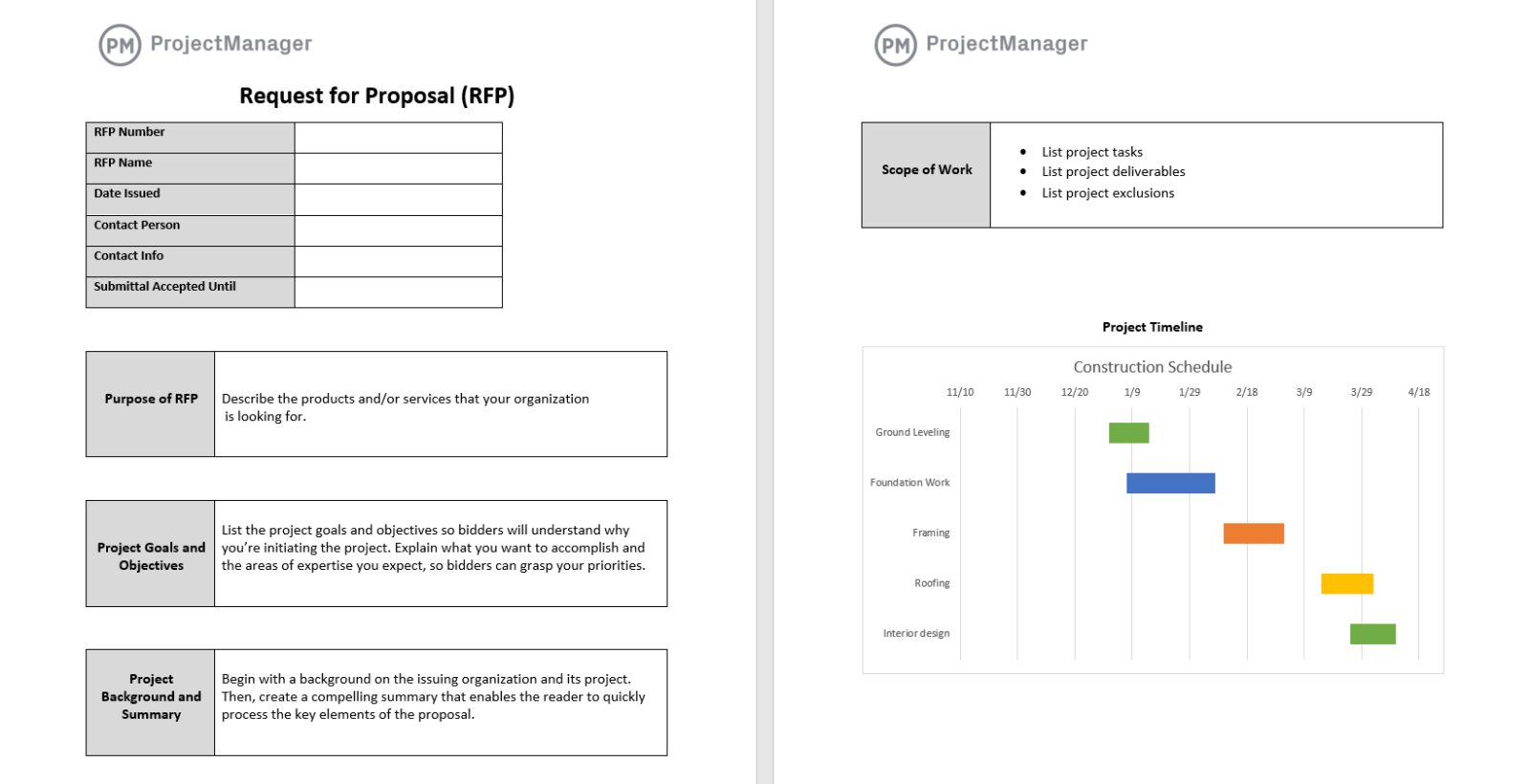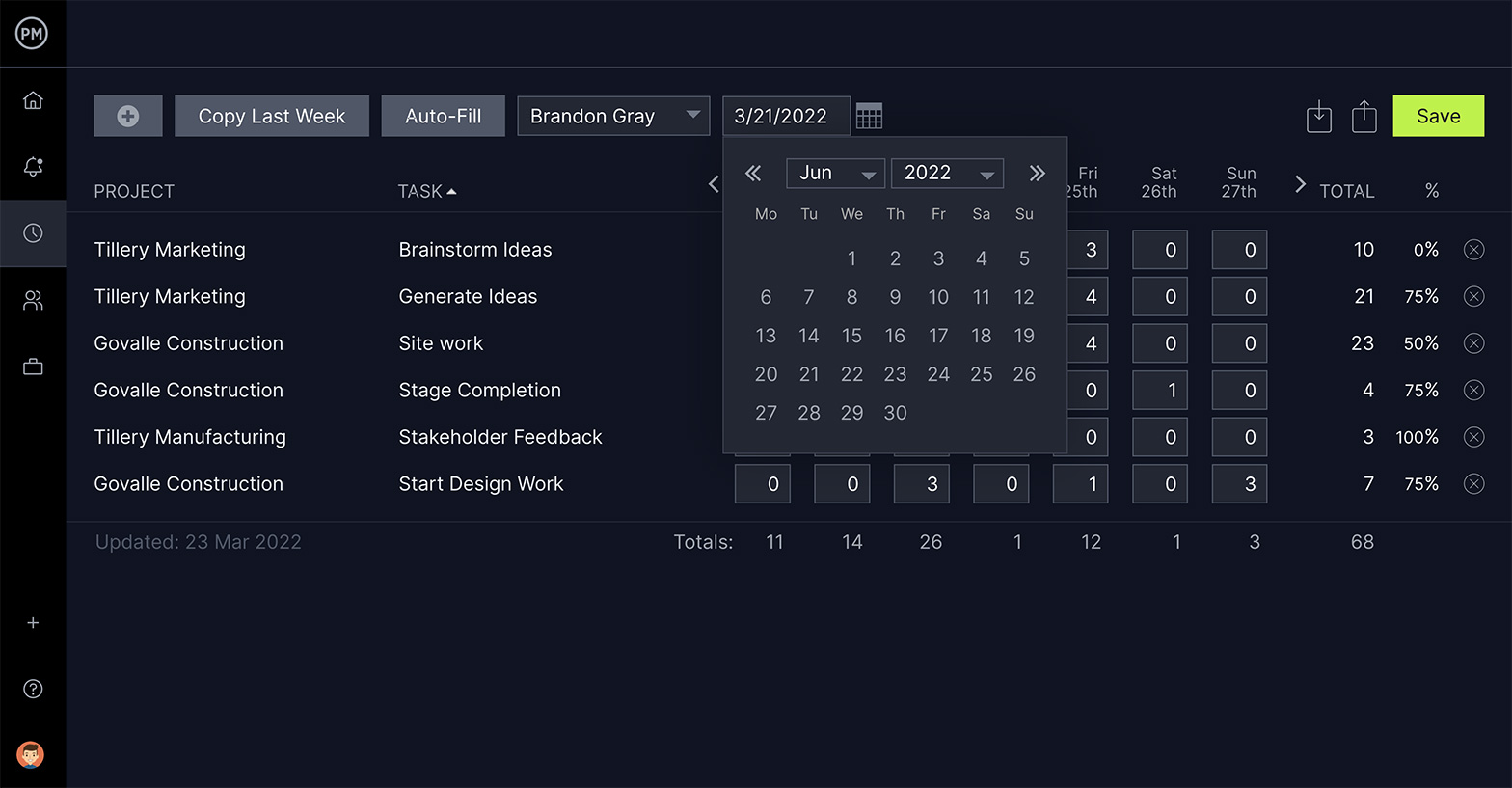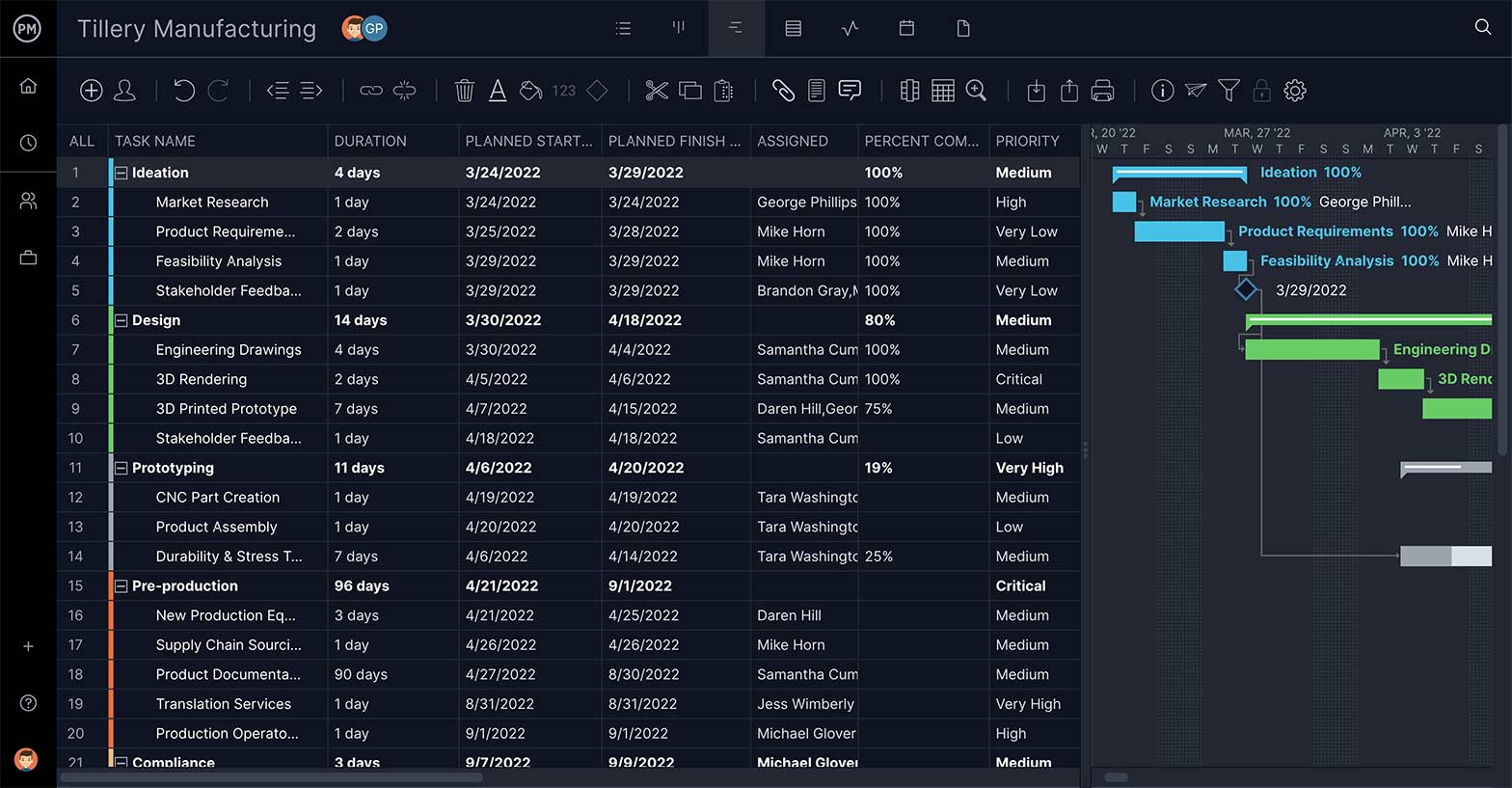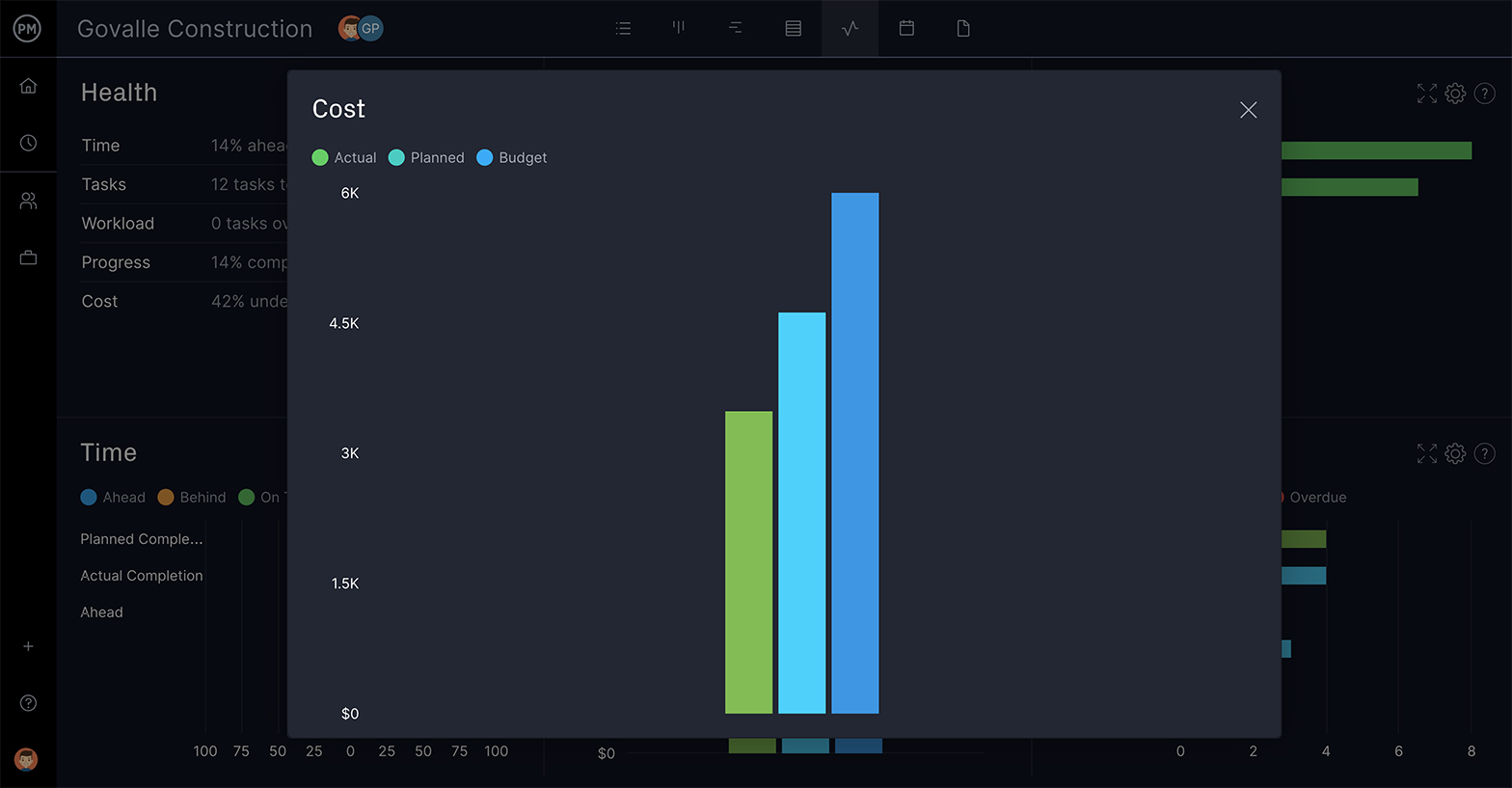Construction contracts define how owners pay for work done by contractors on a construction project. One of the most popular contracts is called a fixed-price contract or lump sum contract, where a contract defines what will be done and sets a specific and final price for that work. However, this popular method doesn’t work when the construction project timeline and material requirements are unknown. That’s when a time and materials contract is used.
What Is a Time and Materials Contract?
A time and materials contract is a legally binding agreement that outlines how an employer will pay a contractor for the time and materials they spent on a project. A time and materials contract is commonly used in construction project management, though it’s also used in product development and other types of projects.
This means the contractor tracks the time and materials its crew or subcontractors use. Then they use this data to bill the employer appropriately over the course of the project.
To track time and costs, project owners and contractors should use project management software like ProjectManager. With ProjectManager, you can use Gantt charts, project calendars, timesheets and real-time project dashboards to keep track of time and costs for an effective application of a time and materials contract. Get started with ProjectManager today for free.
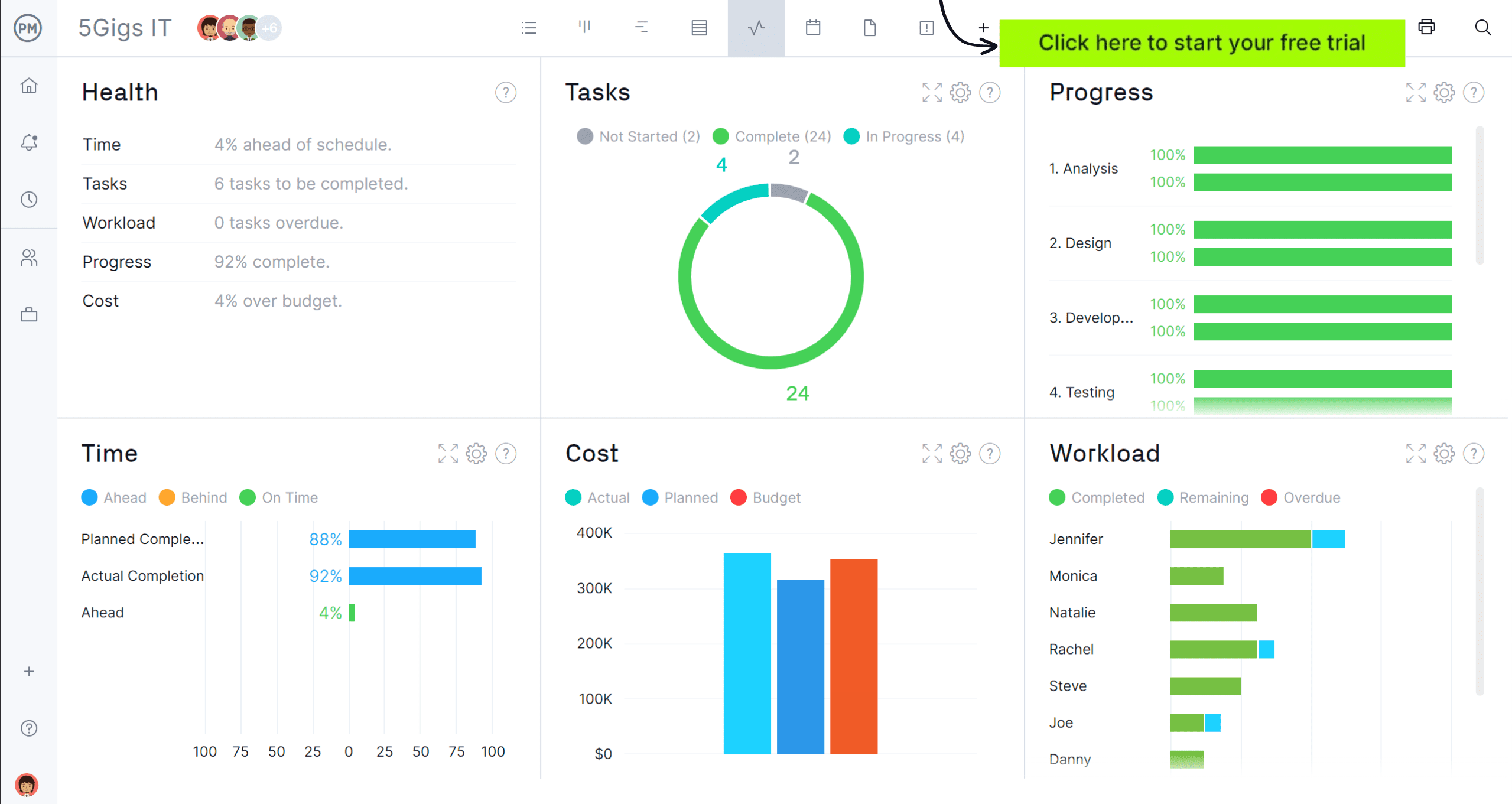

What Should Be Included in a Time and Materials Contract?
Now that we’ve learned what a time and materials contract is, let’s go over the key elements that should be part of any time and materials contract.
1. Agreement Overview
This section outlines the parties involved, the type of contract and basic project details such as the property location and scope. It serves as the formal start of the contract and establishes the identity of the owner and contractor, setting the stage for the terms that follow.
2. Recitals
Recitals provide background context for the agreement. They explain why the contract is being entered into, the nature of the project and the rationale behind using a T&M contract rather than a fixed-price model, ensuring both parties are aligned from the start.
3. Scope of Work
This section defines what work the contractor will perform. It includes tasks, deliverables and any exclusions or limitations. Having a clear scope reduces misunderstandings and provides a framework for managing expectations, controlling cost and assessing the impact of any future changes.
4. Labor Costs
One of the most important steps when creating a time and materials contract is to identify the different tasks that need to be executed so that your project is a success. Then, based on that, you’ll need to estimate the time that will take to execute the work so you can understand what your project timeline looks like.
Once you have a clear picture of your project scope, you can begin to estimate costs. In your time and materials contract, you’ll need to define labor categories for each type of tasks, such as plumbing, masonry or electrical work. Then determine an hourly rate for all types of work and include them in the contract.
5. Material Costs
It’s important to understand that there are different types of costs associated with the material requirements of your project. Here are some examples:
- Direct materials: The term direct materials refers to those raw materials that are directly used in the project. In the case of construction project management, it refers to the concrete, paint, wood and other materials that result in the finished building.
- Direct and indirect costs: You can also specify other direct and indirect costs related to incidental services, material handling costs and other material-related labor costs that aren’t listed under the labor categories you’ve defined in your time and materials contract.
6. Time and Materials Terms
This section breaks down how the contractor will be paid: hourly labor rates, materials markup, equipment charges and subcontractor costs. It includes invoicing procedures, documentation required and optional cost caps. It is the financial heart of the T&M contract and ensures transparent cost tracking.
7. Schedule
This section lists key project dates, including estimated start and finish times. It defines the contractor’s work hours and provides a framework for understanding the project’s timeline. While flexible, it helps the owner track progress and stay informed about any delays.
8. Change Orders
This outlines the process for handling changes in scope, cost or duration. All changes must be agreed upon in writing. This section ensures that additional work, adjustments or unforeseen requirements are formally documented to avoid disputes and maintain clear communication.
9. Contractor Responsibilities
Details what the contractor is expected to provide, including labor, materials, tools and site supervision. It also covers legal and safety responsibilities such as securing permits and maintaining a clean, hazard-free site. This section clarifies the contractor’s obligations throughout the project.
10. Owner Responsibilities
Specifies what the owner must do, such as providing access to the property, approving materials, and making timely payments. It helps avoid delays and conflicts by outlining the owner’s role in ensuring smooth execution of the work.
11. Insurance
This section requires the contractor to carry appropriate insurance, such as general liability and workers’ compensation. It protects both parties in the event of injury, damage or legal claims, and often requires proof of coverage before work begins.
12. Warranties
Outlines the contractor’s warranty on materials and workmanship, including its duration (typically one year). It ensures the owner has recourse if defects appear after completion, promoting accountability and quality workmanship.
13. Termination
Explains how either party can end the agreement, with or without cause. It includes required notice periods and payment terms for work completed up to termination. This protects both parties if the project needs to be stopped early.
14. Dispute Resolution
Describes how disagreements will be resolved—usually through mediation, arbitration or court—along with the legal jurisdiction. This section helps prevent legal escalation by encouraging negotiated solutions and specifying the process to follow if disputes arise.
15. Miscellaneous
Covers general legal provisions, such as the entire agreement clause, amendment process and severability. It ensures that the contract is legally complete and that any changes must be documented in writing and signed by both parties.
16. Signatures
The final section includes signature lines for both parties. By signing, each party agrees to the contract’s terms. It also includes printed names and dates, making the contract official and legally binding.
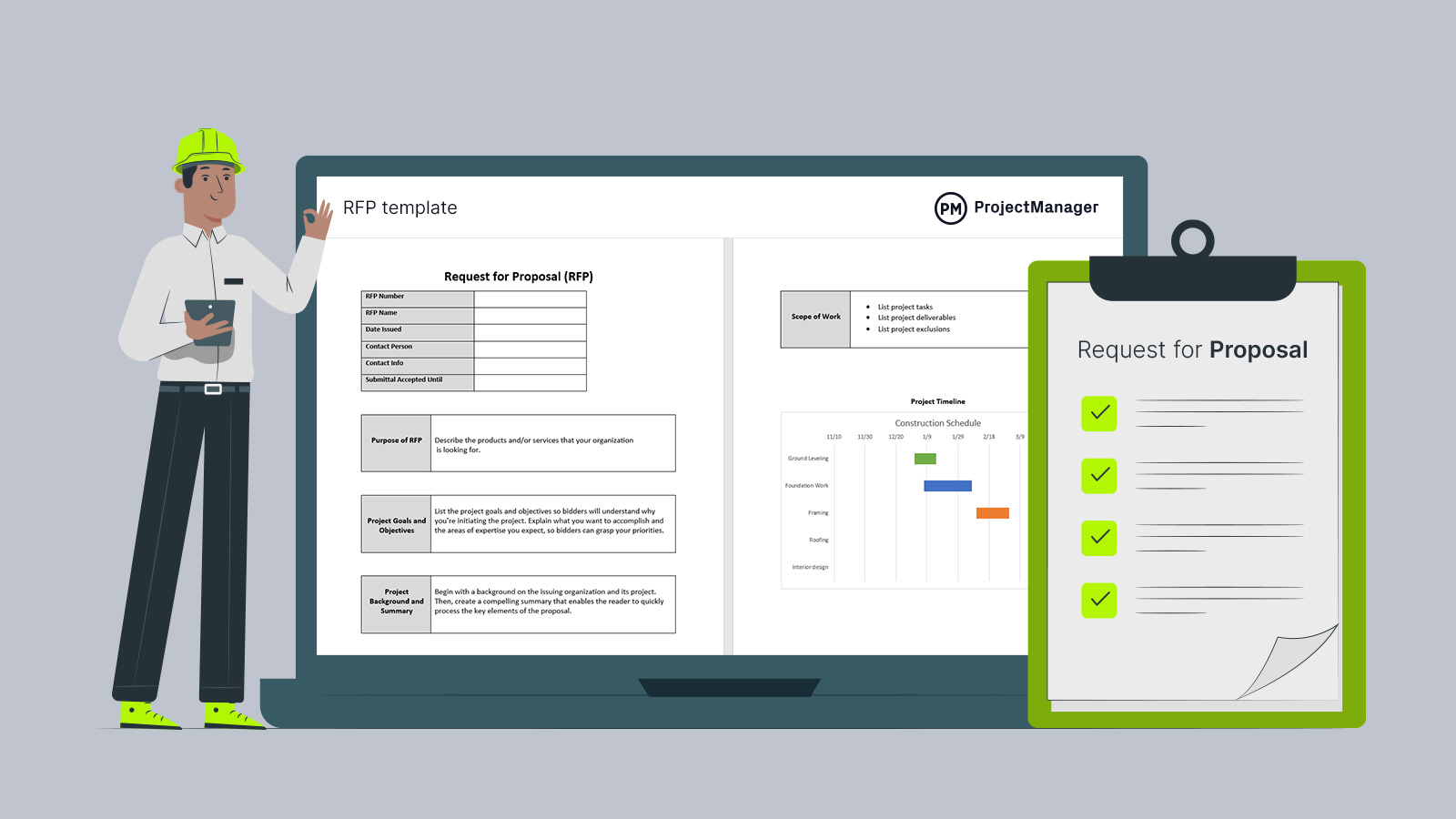

Get your free
RFP Template
Use this free RFP Template for Word to manage your projects better.
Time and Materials Contract Example
To better understand how a time and materials contract works, let’s explore a real-life example. Below is a T&M contract between a homeowner and contractor regarding the construction of an in-ground swimming pool and patio area.
1. Agreement Overview
This Time and Materials Agreement (“Agreement”) is made on May 12, 2025, between:
Owner:
Maria Coleman
123 Oakview Drive
Austin, TX 78702
Contractor:
BlueWave Pools LLC
987 Contractor Lane
Austin, TX 78704
Project Description:
Construction of an in-ground swimming pool and patio area at the Owner’s residence.
2. Recitals
The Owner wishes to hire the Contractor to build a pool area. Both parties agree to a Time and Materials basis due to the potential variability in labor and materials.
3. Scope of Work
The Contractor will:
- Excavate and prepare the site
- Install a 12×24 ft concrete pool with basic filtration system
- Pour concrete deck and install pavers
- Install fencing and lighting around the pool
- Final cleanup and inspection
Excluded: Landscaping, pool heater or permits not specified above
4. Time and Materials Terms
- Labor: $75/hour per crew member
- Materials: Charged at cost + 15% markup
- Equipment Use: Flat $250/day for excavation equipment
- Subcontractors: Charged at cost + 10% markup
- Billing: Weekly invoices due within 10 days of receipt
- Documentation: Invoices will include timesheets and receipts
Not-to-Exceed (Optional): $30,000 unless approved in writing by the Owner
5. Schedule
- Estimated Start Date: May 20, 2025
- Estimated Completion: June 30, 2025
- Work hours: Mon–Fri, 8 AM to 4 PM
6. Change Orders
All changes must be approved in writing using a Change Order Form. Changes may affect cost or schedule.
7. Contractor Responsibilities
- Provide labor, tools, and equipment
- Secure permits if specified
- Maintain a safe and clean worksite
8. Owner Responsibilities
- Provide access to the site
- Approve invoices and pay promptly
- Make timely decisions on finishes or material choices
9. Insurance
The Contractor shall maintain general liability and workers’ compensation insurance and provide a certificate upon request.
10. Warranties
The Contractor warrants workmanship for 1 year from project completion.
11. Termination
Either party may terminate this agreement with 7 days’ written notice. The Owner shall pay for all approved work completed up to the date of termination.
12. Dispute Resolution
Disputes will be resolved by mediation in Travis County, Texas. If unresolved, litigation may proceed under Texas law.
13. Miscellaneous
This document is the entire agreement. Any changes must be in writing and signed by both parties.
14. Signatures
Owner:
Signature: ______________________
Name: Maria Gonzalez
Date: ______________________
Contractor:
Signature: ______________________
Name: David Lee, Manager – BlueWave Pools LLC
Date: ______________________
When Should You Use a Time and Materials Contract?
Again, a T&M contract is ideal for a project without a clear or accurate estimate of the time and costs involved. There’s no point in using a fixed-price contract unless there is a way to determine the cost. And a cost-reimbursable contract would be impossible to determine without knowing the exact time and materials required to execute the work.
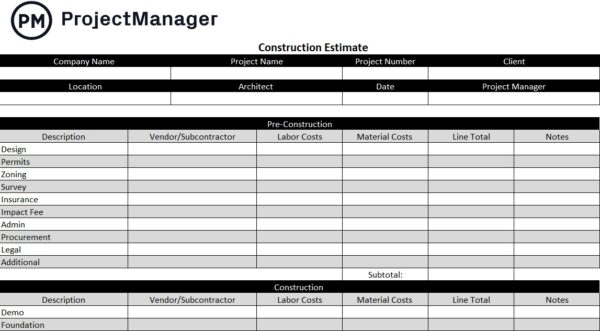

However, a time and materials contract is advisable when the duration of the project is unknown, but there’s a fixed hourly rate for the labor involved. When using a T&M contract, contractors usually add a markup of between 15 and 35 percent.
Therefore, a time and materials contract would be an option for the construction bidding process when dealing with unpredictable scenarios. It is only possible to enter into such an agreement when both parties agree on the conditions, though this is true of all contracts. More importantly, a T&M contract is ideal when there’s a need for flexibility, or you’re new to the industry and can’t make accurate estimates of costs and duration.
Time and Materials Contract vs. Other Construction Contracts
Construction contracts set terms and conditions whenever a project owner hires a contractor to execute construction work. However, construction projects vary in terms of size and complexity, so there are different types of construction contracts to better accommodate the needs of both parties. Let’s see what are the main differences between a time and materials contract and other common construction contracts.
Time and Materials Contract vs. Fixed Price Contract
As mentioned above, there are two main types of payment plans in contract administration. T&M contracts are used when plans are not precise enough to use a fixed-price contract (because there is no definite price for the work.) Instead, contractors are reimbursed for any materials purchased and given a day or hourly rate for their labor.
In contrast, a fixed-price contract is based on a predetermined total cost for the entire project. It works best when the scope is well-defined and unlikely to change. While fixed-price contracts offer predictability for the owner, they may include risk contingencies in pricing. T&M contracts are preferred when unknowns exist, such as during renovation projects, where hidden conditions may emerge.
Owners often favor a time and materials basis when flexibility is needed, but both parties should still include cost controls, such as not-to-exceed limits or scheduled check-ins, to ensure accountability. Selecting between these models depends on how well the scope, timeline and resources are understood at the outset.
Time and Materials Contract vs. Cost-Reimbursable Contract
Beyond T&M and fixed-price contracts, there’s a third type of construction contract called a cost-reimbursable contract. This is when the owner pays the contractor for the actual cost of the work. That includes direct and indirect costs, such as materials, equipment and anything else, including salary, that must be paid to get the job done. Contractors will add a clause, such as a fixed fee or some incentive, to make a profit.
Unlike T&M contracts, cost-reimbursable contracts provide a broader allowance for expenses, often including overhead and administrative costs. They’re frequently used in large-scale or public projects where it’s difficult to estimate total costs upfront.
While both models offer flexibility, cost-reimbursable contracts typically require more detailed cost accounting and are subject to stricter auditing and reporting requirements. The inclusion of incentives or target-cost mechanisms can help align contractor performance with the owner’s goals. Choosing between the two often depends on the complexity and duration of the project, as well as the owner’s preference for control and risk allocation.
Time and Materials Contract vs. Guaranteed Maximum Price (GMP) Contract
A guaranteed maximum price contract sets a maximum price to be paid by the employer to the contractor for a project, regardless of the time and costs. Therefore, the contractor assumes responsibility for delays and all extra costs. However, this shouldn’t be the case, as contractors can use construction project management software to make accurate project estimates and have a good understanding of project timelines and budgets.
GMP contracts offer a hybrid structure that blends aspects of cost-reimbursable and fixed-price agreements. They provide cost transparency while protecting the owner from budget overruns. Often, any savings under the GMP are shared between the owner and contractor as an incentive. This arrangement encourages efficiency and fosters collaboration.
Compared to T&M contracts, GMP contracts involve greater risk for the contractor but offer the owner more financial certainty. They’re commonly used in design-build or fast-track projects where work begins before the full scope is finalized. While more complex to negotiate, GMP contracts can strike a balance between flexibility and cost control when structured correctly.
Pros & Cons of Time and Material Contracts
Let’s take a moment to look into the benefits and problems with time and material contracts. Depending on the situation, they could be just the kind of contract that works within a construction project. They can just as easily be a detriment and the cons might outweigh the pros, leading an organization to seek one of the other contract options.
The Advantages of T&M Contracts
- It’s easy to respond to changes in the project
- Delays and roadblocks can be dealt with easily
- Negotiations are set at the beginning of the job
The Disadvantages of T&M Contracts
- Tracking time and materials can be difficult
- Contractors have little incentive to work efficiently
- Contractors have to front their own costs
Best Practices When Writing a Time and Materials Contract
When entering into any contract, it’s important the agreement is in writing. Both sides need to agree on the terms and sign off on them. This is especially true of the time and materials contract, as it can end up with the employer bleeding money without construction daily reports. As mentioned earlier, having a maximum price is a recommended safeguard.
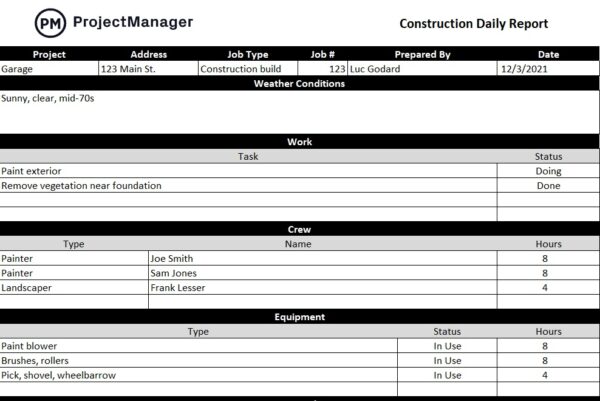

When working with any contractor, ensure that they’re licensed by the Contractors State License Board and that the work they’re doing is within the scope of that license. Working with unlicensed contractors opens up liabilities that can impact the project and even the whole organization. This is also true for business licenses or business tax registration if required in the jurisdiction of the project.
One problem with T&M contracts is they can result in more lawsuits than a fixed-price contract. It’s important to know the risks and consequences involved with contracting with third-party workers. There can be issues with back taxes and other IRS penalties, back pay and damage to the organization’s reputation.
Request for Proposal (RFP) Template
This free RFP template helps you specify all the information that construction contractors will need to include in their construction bids including the scope of work, timeline, budget and other details that will later be used in the time and materials contract.
Free Construction Project Management Templates
Project management and construction management are complex disciplines. That’s why we’ve created dozens of project management templates to assist project managers while they plan, schedule and track projects. Here are some construction project management templates to help you save time.
Construction Estimate Template
A very important part of construction project management is time and cost estimates. That’s true for project owners, contractors and subcontractors, whose profitability depends on accurate project estimates. This free construction estimate template is a great tool to start documenting your construction costs.
Construction Schedule Template
Creating a realistic project schedule is key for success in construction as materials, equipment and labor need to be available at the right time to avoid extra costs or delays. This construction schedule template is a simple tool to get started with construction scheduling.
Construction Proposal Template
Project owners decide which is the best contractor for their project by analyzing their project proposal. Use this free construction proposal template to create a proposal that will stand out in the construction bidding process.
How ProjectManager Helps Keep Track of Time & Materials Contracts
Time and material contracts may be right for you. But if you’re going to use one, it’s crucial you closely track the time and materials used by your contractor. This way you’re only paying for work that has actually been done. ProjectManager is award-winning construction project management software that can monitor the time your contractors work on the job and track the materials they use, all in real time.
Easy Time Management
It’s easy to onboard contractors to our tool, and security settings make sure they’re only able to access those parts of the software you permit them to use. One feature that helps you track their work is our timesheets. When contractors submit their timesheets, they’re sent to the authorized approver and locked to keep the data secure.
Plan with Gantt Charts
Use our Gantt chart view to plan and schedule your project. You can assign and keep track of contractors’ work, as well as track expenses. Once you have a schedule and budget, set the baseline to compare the actual progress and costs to your plan. If you notice contractors spending too much time or money, you can address the issue before it becomes a problem.
Track Data with Live Dashboards
There’s also a live dashboard that tracks a high-level view of the project’s progress and performance. It automatically collects real-time data and calculates it into project costs, time, variance and more. Whatever type of contract you use, our tool makes sure your contractors are working efficiently.
Related Content
ProjectManager is online software that helps you organize tasks, teams and projects. Plan, monitor and report on your project through every phase of its life cycle while giving your teams the tools they need to collaborate and work more productively. Join the tens of thousands of teams already using our tool and take this free 30-day trial today.




